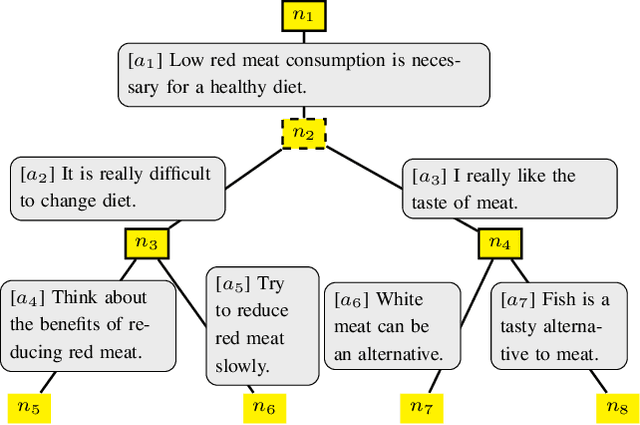Machine Learning for Utility Prediction in Argument-Based Computational Persuasion
Paper and Code
Dec 15, 2021


Automated persuasion systems (APS) aim to persuade a user to believe something by entering into a dialogue in which arguments and counterarguments are exchanged. To maximize the probability that an APS is successful in persuading a user, it can identify a global policy that will allow it to select the best arguments it presents at each stage of the dialogue whatever arguments the user presents. However, in real applications, such as for healthcare, it is unlikely the utility of the outcome of the dialogue will be the same, or the exact opposite, for the APS and user. In order to deal with this situation, games in extended form have been harnessed for argumentation in Bi-party Decision Theory. This opens new problems that we address in this paper: (1) How can we use Machine Learning (ML) methods to predict utility functions for different subpopulations of users? and (2) How can we identify for a new user the best utility function from amongst those that we have learned? To this extent, we develop two ML methods, EAI and EDS, that leverage information coming from the users to predict their utilities. EAI is restricted to a fixed amount of information, whereas EDS can choose the information that best detects the subpopulations of a user. We evaluate EAI and EDS in a simulation setting and in a realistic case study concerning healthy eating habits. Results are promising in both cases, but EDS is more effective at predicting useful utility functions.
 Add to Chrome
Add to Chrome Add to Firefox
Add to Firefox Add to Edge
Add to Edge